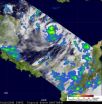(Press-News.org) London, UK (September 24, 2010) – Prison numbers in England and Wales have risen sharply in the last decade, and are set to rise further. A study out today in the Probation Journal published by SAGE suggests that economists have a unique opportunity to help solve the prison crisis by bringing sophisticated economic modelling techniques to bear on the problem.
Chris Fox and Kevin Albertson from Manchester Metropolitan University contend that during the last decade, penal policy allowed many opportunities to harness the latest analytical research to optimise public spending slip away. In their paper "Could economics solve the prison crisis?" they argue that a new approach is possible, driven not only by moral or social concerns about actual and perceived crime rates and a high prison population, but also informed by economic analysis and argument. The current economic climate makes their position hard to ignore.
According to Fox and Albertson, there is scant evidence society will benefit from locking up ever more criminals. Crime rates have fallen, but the link between rising numbers in prison and lower crime rates is debatable; hikes in prison numbers are likely only responsible for a small drop in crime.
Since 1997, economic analyses of the options for England and Wales when developing criminal justice policy and penal policy grown in reach and volume, partly led by government actions or policy. "But for every step forward in developing penal policy based on socio/economic analysis, at times it seems government takes at least one and sometimes more steps back," says Fox.
The authors argue that the last decade's important developments cover a broad range of factors including aspects of the policy debate on sentencing; the government's commitment to evidence-based policy; investment in the economics profession across government; and the rise of the Justice Reinvestment movement, particularly in the USA.
However, these promising developments, underpinned by clearly articulated economic principles, were superseded by more recent government policy. Prison numbers have remained extremely high. As of January 2010 the prison population was 83,378, according to HM Prison Service.
One stumbling block to the greater use of economic analysis of criminal justice challenges is that, to date, the government has made only limited investment in commissioning robust impact studies of criminal justice policies and programmes. UK studies examining the effect of prison are in short supply. "The government has not, to the knowledge of the authors, commissioned and certainly hasn't published any robust impact studies of the relative impact of privately and publicly managed prisons," says Fox.
The authors urge the government to invest in more impact studies of key criminal justice interventions, particularly prison. They also want to see more cost-benefit analyses to inform policy, and continued capacity building, both within government and the wider research community, to undertake robust economic analyses of criminal justice policies and programmes.
Following the lead of the USA, they also suggest that Justice Reinvestment is an approach likely to lead to more effective criminal justice policies compared to incarceration for reducing re-offending, and at a lower cost. However, more work is required to transfer successfully the Justice Reinvestment model to a UK setting. In the USA, Justice Reinvestment has been implemented at State and County levels by a single body or elected official with responsibility for all the key services required to effect sustained reductions in offending and re-offending over a criminal career: from early preventative measures that target at risk individuals, families and communities through to interventions for persistent and prolific offenders. In the UK, relevant budgets for crime reduction and criminal justice are held by a number of different organisations and at different levels of government. Fox and Albertson contend that a radical suggestion worthy of investigation is to devolve budgets for custodial sentences to groups of local authorities. "A set of financial incentives would be hard for regional policy-makers to ignore," Fox says, adding that, "a policy pursuing 'more of the same' is not reasonable."
###
"Could economics solve the prison crisis?" by Professor Chris Fox and Dr Kevin Albertson is published today, September 24, in the Probation Journal.
The article will be available free for a limited time: http://prb.sagepub.com/content/57/3/263.full.pdf+html
Chris Fox is Professor of Evaluation at Manchester Metropolitan University. c.fox@mmu.ac.uk
Dr Kevin Albertson is Principal Lecturer at Manchester Metropolitan University E-mail: k.albertson@mmu.ac.uk
SAGE is a leading international publisher of journals, books, and electronic media for academic, educational, and professional markets. Since 1965, SAGE has helped inform and educate a global community of scholars, practitioners, researchers, and students spanning a wide range of subject areas including business, humanities, social sciences, and science, technology, and medicine. An independent company, SAGE has principal offices in Los Angeles, London, New Delhi, Singapore and Washington DC. www.sagepublications.com
END
Sept. 24, 2010 — Biometric systems -- designed to automatically recognize individuals based on biological and behavioral traits such as fingerprints, palm prints, or voice or face recognition -- are "inherently fallible," says a new report by the National Research Council, and no single trait has been identified that is stable and distinctive across all groups. To strengthen the science and improve system effectiveness, additional research is needed at virtually all levels of design and operation.
"For nearly 50 years, the promise of biometrics has outpaced the application ...
Basic physical limitations following breast cancer treatment can have far-reaching consequences that substantially affect how long a patient lives.
According to a new study published online in the Journal of the National Cancer Institute, breast cancer survivors with functional limitations – an inability to perform normal daily activities – caused by the disease or its treatment are more likely to die because of overall poorer health.
The scientists found that survivors who reported physical limitations after breast cancer treatment have the same risk of dying from ...
The first cultivar of 'ōhelo berry, a popular native Hawaiian fruit, has been released by U.S. Department of Agriculture (USDA) scientists and their university and industry cooperators.
'Ōhelo (Vaccinium reticulatum Smith) is a small, native Hawaiian shrub in the cranberry family, commonly found at high elevations on the islands of Maui and Hawaii. As people scour the landscape to harvest this delectable berry for use in jam, jelly and pie filling, they unfortunately disrupt the fragile habitats where this plant grows.
In an effort to reduce damage to the ...
CORVALLIS, Ore. – A new study has determined that teenagers who have abortions are no more likely to become depressed or have low self-esteem than their peers whose pregnancies do not end in abortion.
The study conducted by researchers from Oregon State University and University of California, San Francisco, is the first to use both depression and low self-esteem as outcomes with a nationally representative sample of adolescents.
The researchers found that young women in the study who had an abortion were no more likely to become depressed or have low self-esteem within ...
You'd think that people choosing to live near to outdoor recreation amenities would have a lower body mass index or BMI thanks to an increase in all that healthy outdoor activity right on one's doorstep. Yet a new University of Alberta study looking at the relationship between reasons for choosing a neighbourhood to live in, physical activity and BMI, shows that's simply not the case.
In fact researchers found that those who said they'd moved to be closer to outdoor recreation opportunities actually showed a marked increase in BMI over the six years of a longitudinal ...
BOSTON—In the quest to arrest the growth and spread of tumors, there have been many attempts to get cancer genes to ignore their internal instruction manual. In a new study, a team led by Dana-Farber Cancer Institute scientists has created the first molecule able to prevent cancer genes from "hearing" those instructions, stifling the cancer process at its root.
The study, published online by the journal Nature, demonstrates that proteins issuing stop and start commands to a cancer gene – known as epigenetic "reader" proteins – can be targeted for future cancer therapies. ...
With several advanced warfare vehicles and a lineup of exciting technologies, the Office of Naval Research (ONR) will showcase its latest expeditionary equipment at the 2010 Modern Day Marine Exposition scheduled Sept. 28-30 at Quantico Marine Corps Base, Quantico, Va.
Modern Day Marine is one of the world's largest trade shows featuring expeditionary warfare equipment. More than 400 exhibitors and 8,000 attendees are expected to attend the event—now in its 30th year—for an up-close look at equipment and systems that support the U.S. Marine Corps and other allied forces' ...
An instrument on NASA's Aqua satellite noticed increasing colder cloud top temperatures of tropical depression 15 in the south-central Caribbean just before it strengthened into Tropical Storm Matthew late on Sept. 23. The TRMM satellite also spotted heavy rainfall within the system. Matthew is now headed to the western Caribbean and watches and warnings are in place as Matthew may continue to strengthen.
Cloud top temperatures indicate the strength of the storm to forecasters. The colder the cloud top temperatures, the stronger the convection and uplift. When cloud top ...
Towering thunderstorms and heavy rainfall are two things that NASA's CloudSat satellite saw as it passed over Typhoon Malakas, and those two factors confirm a strong storm. NASA's CloudSat satellite's Cloud Profiling Radar can basically slice a tropical cyclone in half and take a look at its clouds and rainfall, and that's what it did when it passed over Typhoon Malakas on Sept. 23.
CloudSat flew over Typhoon Malakas during the daytime on Sept. 23. At that time, Malakas had a minimum central pressure of 965 millibars, maximum winds of around 115 mph (100 knots), and ...
The GOES-13 satellite has been keeping an eye on Tropical Storm Lisa and watched her birth, graduation to depression then tropical storm and back to depression. Now, Lisa has grown back to tropical storm status, but it may be short-lived.
At 11 a.m. EDT on Friday, Sept. 24, Tropical Storm Lisa had maximum sustained winds near 50 mph and she may strengthen and weaken over the weekend, but by Sunday colder waters will zap her energy source and she is forecast to be a depression.
Meanwhile, on Sept. 24, she was still frolicking in the eastern Atlantic, about 320 miles ...



